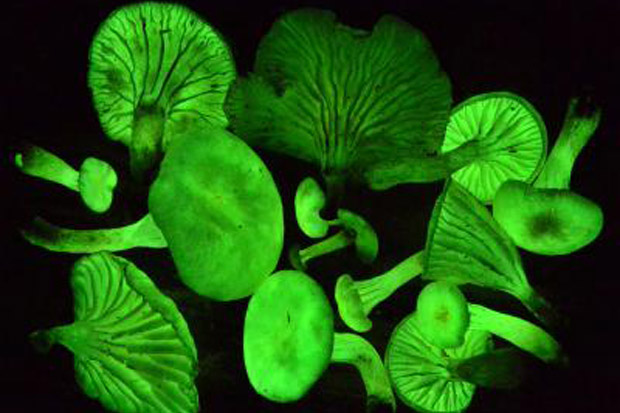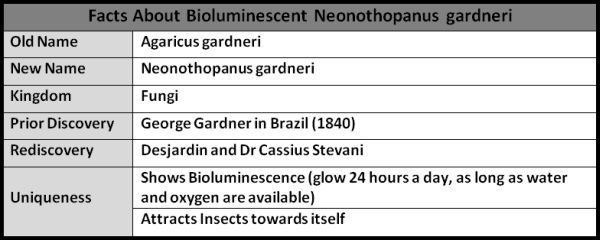
Until two years back, people had forgotten an interesting phenomenon about nature i.e. some flora emit radiance in the night. The fact that some mushrooms glow at night so brightly that one can read under their light, was first discovered in 1840 in Brazil by renowned botanist George Gardner. So much impressed George was with this fungus, that he sent a sample of it to Kew Herbarium in London, where it was named as Agaricus Gardneri. The first phase of this mushroom’s fame stopped there as people somehow forgot about the it and its unique features. Also, the mushroom was not seen for next 170 years till 2009, when it was rediscovered by Denis Desjardin. Desjardin works at San Fransisco State University. The botanists has recovered new samples of the fungus again from the forests of Brazil. After careful examination of the mushroom’s physiology, anatomy and genetic pedigree, the botanist has reclassified it as Neonathopanus Gardneri. The botanist and his team hopes that by studying further about this mushroom, they will be able to understand the reason as to why a few fungi glow at night.
Neonathopanus Gardneri:
Neonathopanus Gardneri – a luminescent mushroom has such properties that make it glow at night time like fireflies. While it is known that it is the abdomen of fireflies that is responsible for the glow, reasons of the glow of these mushrooms is not known so far but it is hoped that the botanists who have rediscovered it, will find it out very soon.
The mushroom was first discovered in 1840 on the streets of a place called Vila de Natividade in Brazil when British botanist George Gardner accidentally ran into a group of boys who were playing with the mushrooms. Gardner was immediately drawn by the luminescent ‘object’ and asked the boys to allow him to have a better look at it. He was amazed to see that it was a mushroom and not a luminescent toy. The boys were calling it ‘flor-de-coco’ and took Gardner to the place where the mushroom was growing. The mushroom was growing on decaying palm leaves at the base of a dwarf palm. Now, having been rediscovered and rechristened after careful examination, the mushroom has stirred a renewed interest among the botanists’ community all over the world.
The rediscovery was not an easy one and as per the sources, Desjardin and his fellow at Brazil Dr Cassius Stevani, had to go for mushroom hunting for many nights at a stretch. They searched for the fungus without turning on any kind of lighting device and risking their lives to dangerous wild animals. Their work was facilitated to a great extent by digital cameras as they could quickly take the photographs for their research. Finally their hard work paid and they were able to find out the luminescent mushroom.

Interesting Characteristics:
- The researchers believe that the mushroom can emit light due to the presence of luciferin and luciferas chemicals and their reaction.
- Bioluminescence, the ability of organisms to produce light all by themselves, is a widespread phenomenon across flora and fauna.
- There are various kinds of Bioluminescent fungi available on Earth among them being the jack o’ lantern mushrooms.
- If water and oxygen are available then these mushrooms can glow 24/7.
- Insects get attracted to the mushroom due to its glow but if they eat away its glowing structure then they can be harmful to them.


